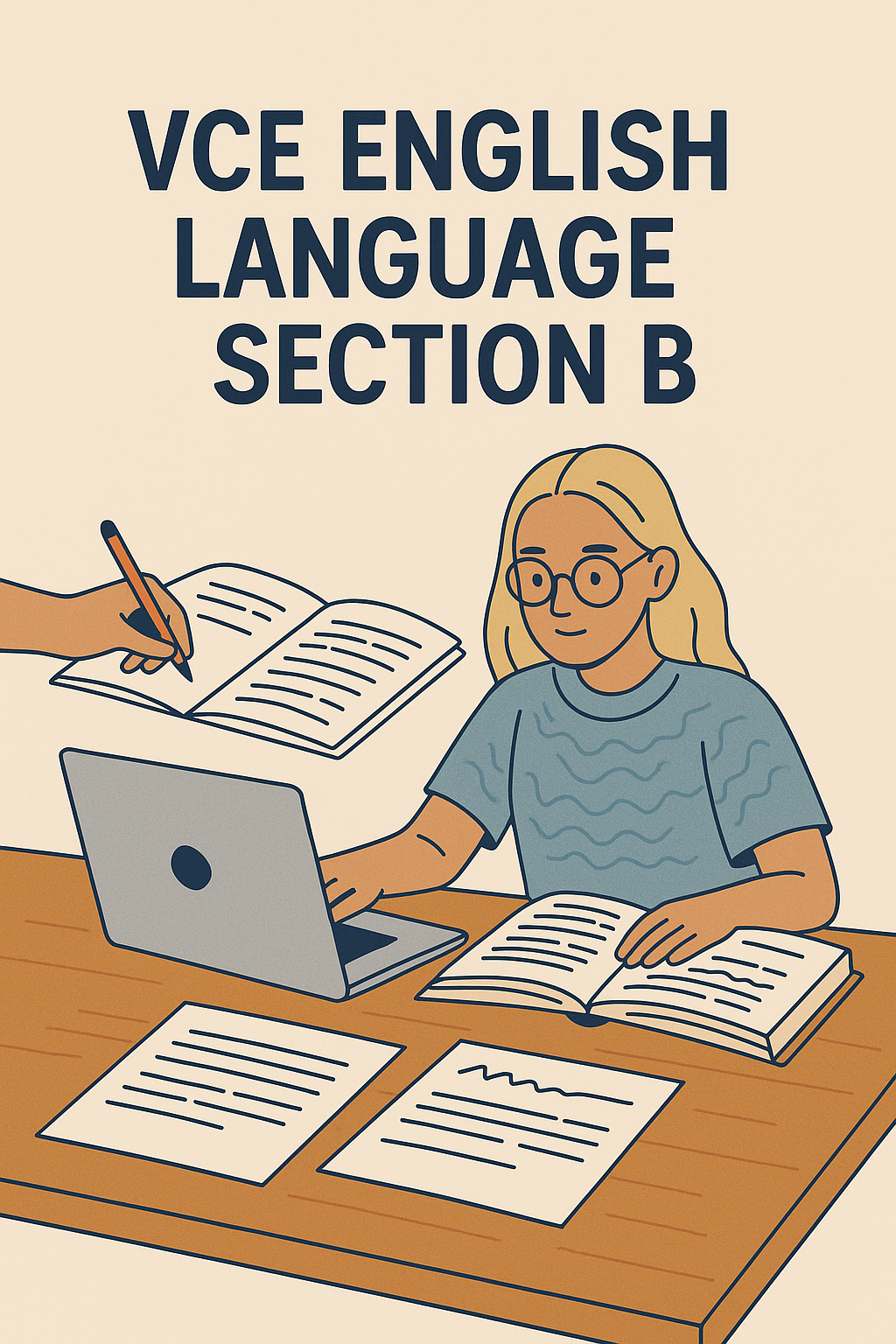
How to Analyse Section B on the VCE English Language Exam (Analytical Commentary)
Hi everyone, my name is Poorva, and I graduated from Mac.Rob in 2024, scoring a raw 46 in English Language 3/4.
Today, I’ll be providing a step-by-step guide on how to prepare for Section B of the VCE English Language 3/4 exam (Analytical Commentary) — and with only 3 weeks to go, it’s time to refine your strategy.
If you’re after a full breakdown of how to structure your overall exam prep, check out my earlier post:
👉 How do I prepare for the VCE English Language exam (Step-by-Step Guide)?
As a VCE English Language tutor in Melbourne, I’ve seen that Section B (Analytical Commentary) is often the hardest part of the exam — not only because of the time pressure, but also because it demands a deep understanding of linguistic concepts and precise analysis.
Here’s how to approach it effectively.
1. ⏱ Give yourself 6–7 minutes of reading time
When doing full practice exams, read the Analytical Commentary text second last (before the SAQ).
During this reading time:
a. Read the context box and skim through the text to get a quick understanding of what it’s about. (2 min)
b. Brainstorm expected features — what kind of language features and sociolinguistic concepts might appear? (2 min)
c. During your second read, pick out specific examples or features you may want to include in your commentary. (3 min)
This process builds familiarity and helps you plan your VCE English Language analysis efficiently before writing.
2. ✍️ Start writing and annotate effectively
Once writing time begins, there’s no need for highlighters — I personally circle or underline with a pen, but use whatever helps you stay focused.
Annotate for:
- Metalanguage
- Key sociolinguistic concepts
- Examples you identified during reading time
This kind of annotation practice is something I reinforce through my VCE English Language tutoring sessions and VCE English Language programs — because it trains your eye to spot analysis-worthy details quickly.
3. ⏰ Aim to complete Section B in 45–50 minutes
This section should always be completed last, since it doesn’t require a conclusion — meaning if you run out of time, it’s less noticeable than an unfinished essay.
Set a timer when you practise: 45–50 minutes max.
Developing time awareness is essential for every VCE English Language student, especially when balancing Section A, B, and C under exam conditions.
4. 🧠 Structure your paragraphs consistently
A clear, repeatable structure is key. I recommend keeping the same paragraph framework across all your Analytical Commentaries.
Also, always introduce your quote before your analysis — this ensures a natural flow and stronger cohesion.
Here’s a structure that worked well for me (and for many students I’ve tutored):
a. Paragraph 1: Register and Tenor
b. Paragraph 2: Function, Purpose, and Intent
c. Paragraph 3: Situational and Cultural Context — focus on cohesion and coherence, or spoken discourse strategies depending on the mode (spoken/written).
This framework helps you cover a comprehensive range of features while staying organised — something that’s highly valued in all VCE English Language programs.
5. 📝 Mark and reflect (but not immediately!)
Once you’ve completed your Analytical Commentary, resist the urge to mark it right away.
Instead, wait until the next day, or at least give yourself a few hours. This break allows your mind to decompress and spot new insights you might have missed.
For best results:
- Swap responses with a peer to remove personal bias.
- Compare ideas — you’ll often learn new examples or interpretations.
- Log your mistakes and track high-yield features (those that frequently appear in each text type).
- Write brief learning summaries to consolidate what you’ve learned.
This reflective approach is a core skill taught in quality VCE English Language programs and refined through consistent guidance from an experienced VCE English Language tutor in Melbourne.
🔍 Example: Annotating a Paragraph
To illustrate, I’ve annotated an Analytical Commentary body paragraph on Function, Purpose, and Intent.
Each comment highlights how to integrate quotes, metalanguage, and linking analysis to sociolinguistic context effectively — something I always encourage my students to practise regularly.
🌟 Final Thoughts
Section B can feel challenging, but with enough timed practice and structured reflection, it becomes one of the most rewarding parts of the exam.
A strong Analytical Commentary demonstrates not only your linguistic understanding but also your ability to apply theory to real texts — a core skill in any VCE English Language program.
If you’d like more tailored feedback or strategies, consider working with a VCE English Language tutor who can guide you through model responses and time management techniques specific to your writing style.
